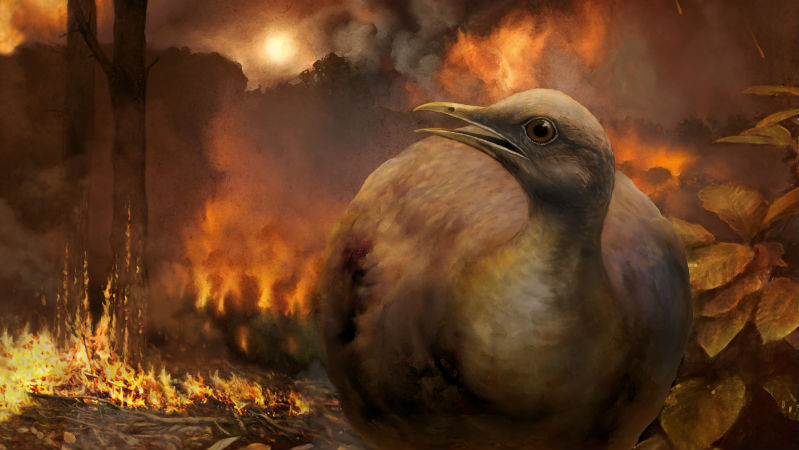New research shows that global mass deforestation caused by the asteroid that wiped out the dinosaurs led to the extinction of all the ancient tree-dwelling birds. The study, led by the Milner Centre for Evolution, suggests all modern tree-dwelling birds evolved from a partridge-like common ancestor that lived on the ground.
- Ancient birds, called Enantiornithes or “opposite birds” were once widespread and diverse but were completely wiped out by the Cretaceous-Paleogene (K-Pg) mass extinction, caused by an asteroid impact 66 million years ago.
- Study shows the asteroid also caused global deforestation and extinction of most flowering plants, destroying the habitats of the tree-dwelling opposite birds
- Reconstruction of the evolutionary tree of birds shows all modern birds evolved from a small ground-dwelling bird similar to modern partridges
- Study connects for the first time the extinction of the arboreal opposite birds, with the observation of an explosion of diversity in birds after the K-Pg event
- Birds didn’t move back into the trees again until the forests recovered thousands of years later
An international team of UK, US, and Swedish researchers, publishing in the journal Current Biology, pieced together evidence from the plant fossil record and ecology of ancient and modern birds, and found that the only birds to survive the Cretaceous-Paleogene (K–Pg) mass extinction event lived on the ground.
“We drew on a variety of approaches to stitch this story together,” said lead author Dr Daniel Field, Prize Fellow at the Milner Centre for Evolution.
“We concluded that the devastation of forests in the aftermath of the asteroid impact explains why tree-dwelling birds failed to survive across this extinction event. The ancestors of modern tree-dwelling birds did not move into the trees until forests had recovered from the extinction-causing asteroid.”
Paleobotanist Dr Antoine Bercovici from Smithsonian Institution analysed the plant fossil record before and after the K-Pg boundary.
He said: “Our study examined the fossil record from New Zealand, Japan, Europe and North America which showed there was a mass deforestation across the globe at the K-Pg boundary. This was followed by a mass colonisation of so-called ‘disaster plants’, such as ferns, whose spores were able to survive the asteroid hit and germinate rapidly to fill the habitats left empty by the extinction of the trees.
“The recovery of canopy-forming trees such as palms and pines happened much later, which coincides with the evolution and explosion of diversity of tree-dwelling birds.”
The researchers found that once the forests had recovered, birds began to adapt to living in trees, acquiring shorter legs than their ground-dwelling ancestors and various specialisations for perching on branches.
Dr Field added: “Today, birds are the most diverse and globally widespread group of terrestrial vertebrate animals—there are nearly 11,000 living species.
“Only a handful of ancestral bird lineages succeeded in surviving the K–Pg mass extinction event 66-million-years-ago, and all of today’s amazing living bird diversity can be traced to these ancient survivors.
“We are working hard to shed new light on this murky portion of the fossil record, which promises to tell us a lot about how birds and other animal groups survived - then thrived -following the extinction of T. rex and Triceratops.”
Co-authors of the study are Jacob Berv of Cornell Lab of Ornithology, Regan Dunn of the Field Museum of Natural History, Tyler Lyson of the Denver Museum of Nature and Science, David Fastovsky of the University of Rhode Island, Vivi Vajda of the Swedish Museum of Natural History, and Jacques Gauthier of Yale University.
Daniel J. Field, Antoine Bercovici, Jacob S. Berv, Regan Dunn, David E. Fastovsky, Tyler R. Lyson, Vivi Vajda and Jacques A. Gauthier (2018) “Early Evolution of Modern Birds Structured by Global Forest Collapse at the End-Cretaceous Mass Extinction” is published in Current Biology DOI: 10.1016/j.cub.2018.04.062.

